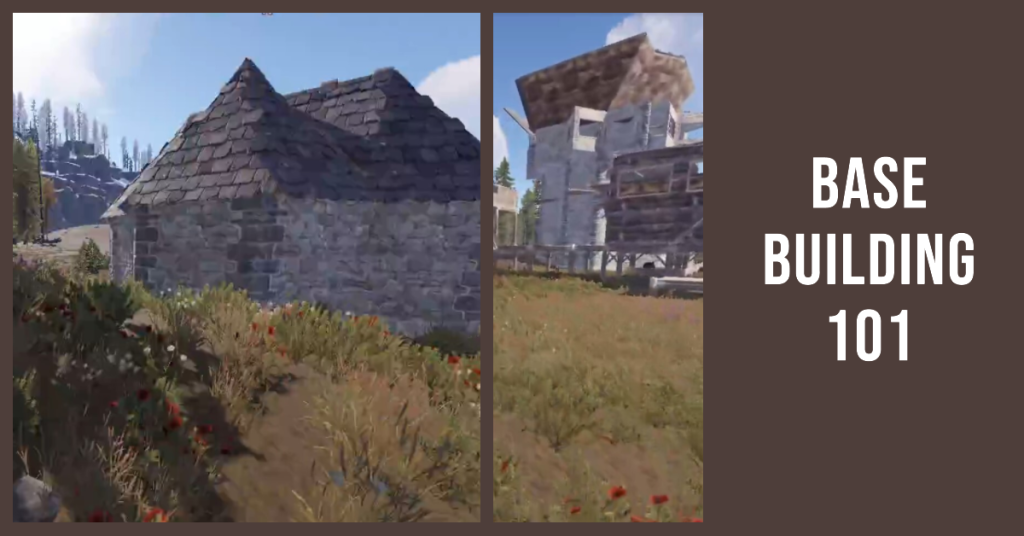Base Building 101: Creating Fortresses in the World of Rust
Ah, Rust! The game that drops you in the middle of nowhere, nearly naked and surrounded by potential dangers. While navigating your way through this post-apocalyptic playground, there’s one thing that stands between you and a horde of player raiders – your base. It’s your fortress, your refuge, and your ultimate weapon in the game. If you’re new to Rust or just seeking to up your base-building game, then, mate, you’ve landed on the right page.

Understanding the Rust Environment
Rust’s environment isn’t just there to provide a pretty backdrop for your survival escapades; it’s an integral part of your base-building strategy. Think about it: would you rather build a base next to a busy monument teeming with players, or tucked away in a serene, resource-rich forest?
Location, location, location – that's the mantra. While setting up near resources like ore and wood might make your initial gathering easier, being close to a monument might give you a strategic edge, especially if you're after high-tier loot. But remember, with great loot comes great responsibility (read: threats). Factor in the roaming bands of players and decide how much attention you want to attract.
Gathering Essential Materials
Like any epic DIY project, your Rust base starts with a trip to gather some essentials. The big three are wood, stone, and metal. Each has its purpose, from the early wood shelters to the formidable armoured walls that protect your most prized possessions.
Start with basic tools like a stone pickaxe. As you progress, consider upgrading to salvaged tools or even a jackhammer if you’re feeling fancy. Remember, the faster you gather, the faster you secure yourself from the unpredictabilities of Rust.
Laying the Foundations
Once you've hoarded your materials, it's time to play architect. Dream big but start small, especially if you're new. Rust's building mechanics operate on a grid system, allowing you to lay foundations in squares and triangles. Your foundation is literally the base of your base – make it strong and expandable.
Heard of honeycombing? It’s a Rust favourite! This technique involves creating multiple layers or ‘cells’ around your base, making it harder for raiders to break in. It's a resource drain but can be the difference between logging in to a looted base or finding your loot intact.
Walls, Doors, and Airlocks
After your foundation, your walls and doors are your next line of defence. And not all walls are created equal. You'll start with wood, but as you progress and gather more resources, you'll want to upgrade to stone, then metal, and finally, armoured.
Enter the airlock – a small antechamber between outside and inside. Essentially, it's a room with two doors, ensuring that if raiders get through the first, they still can't rush straight into your base. Add a code lock to your doors, and you’re golden.
Defensive Structures and Traps
Now, for the fun part! Turn your base into a raider's worst nightmare with a mix of external defences and sneaky traps. High external walls and barricades? Check. Land mines and auto turrets to surprise unwary invaders? Double-check.
Don’t forget the tool cupboard, a small but mighty structure that prevents others from building near your base. Place it wisely, shield it well, and keep it a secret.
Storage Solutions
What’s a base without some loot? And where do you stash your loot? Chests, shelves, and lockers are your best friends. Try to spread out your storage to minimise the damage from a raid. If you've got ultra-valuable items, consider burying them in hidden stashes outside your base. It’s the Rust equivalent of not putting all your eggs in one basket.
Vertical Expansion and Roof Access
Why settle for a bungalow when you can have a multi-storey fortress? Vertical expansion gives you a vantage point to scout the surroundings or take shots at pesky raiders. Add shooting floors, embrasures, and roof access, and you’ve got yourself a sniper's paradise.
Maintenance and Upkeep
Like any real-world property, your Rust base isn’t a ‘build it and forget it’ deal. Over time, structures decay, especially if you’re not around. Regularly check for weak points, gather materials for upkeep, and keep your base in tip-top shape. After all, what’s the point of a fortress if it crumbles on its own?
Aesthetics vs Functionality
Last but not least, consider the look of your base. Rust isn’t just about survival; it’s about style too! Paint signs, throw in some decorative items, and let your base reflect your personality. However, always balance aesthetics with functionality. A beautiful base is great, but not if it’s easily raidable.
Conclusion
In the unforgiving world of Rust, your base is more than just a home; it's your lifeline. So, equip yourself with the knowledge, gather those resources, and start building. Remember, every base you build, every raid you survive, adds to your Rust story. Ready to make yours legendary?
If you're serious about your Rust journey, a stable and high-performance server can make all the difference. With GTXGaming’s Rust server hosting, you're not just getting a platform to play on – you're investing in a seamless and enhanced gameplay experience. Their servers offer top-notch performance, custom mods, and round-the-clock support, ensuring that your architectural marvels in Rust stand tall and unshaken. Whether you're building your first shack or a sprawling fortress, GTXGaming provides the stability and speed you need to thrive in the harsh lands of Rust. Dive in today and let your base-building skills truly shine.
Also, check out our guide on optimizing your FPS in RUST, to give you that ultimate edge in PVP / general combat.



